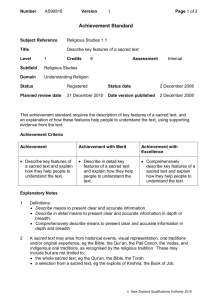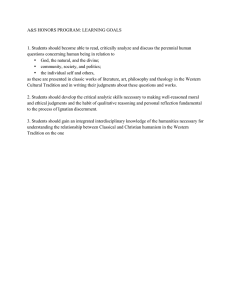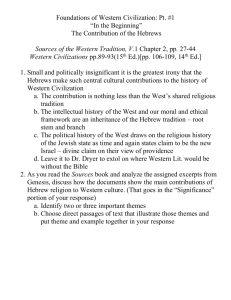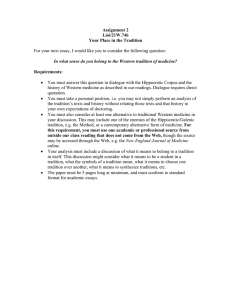Achievement Standard
advertisement
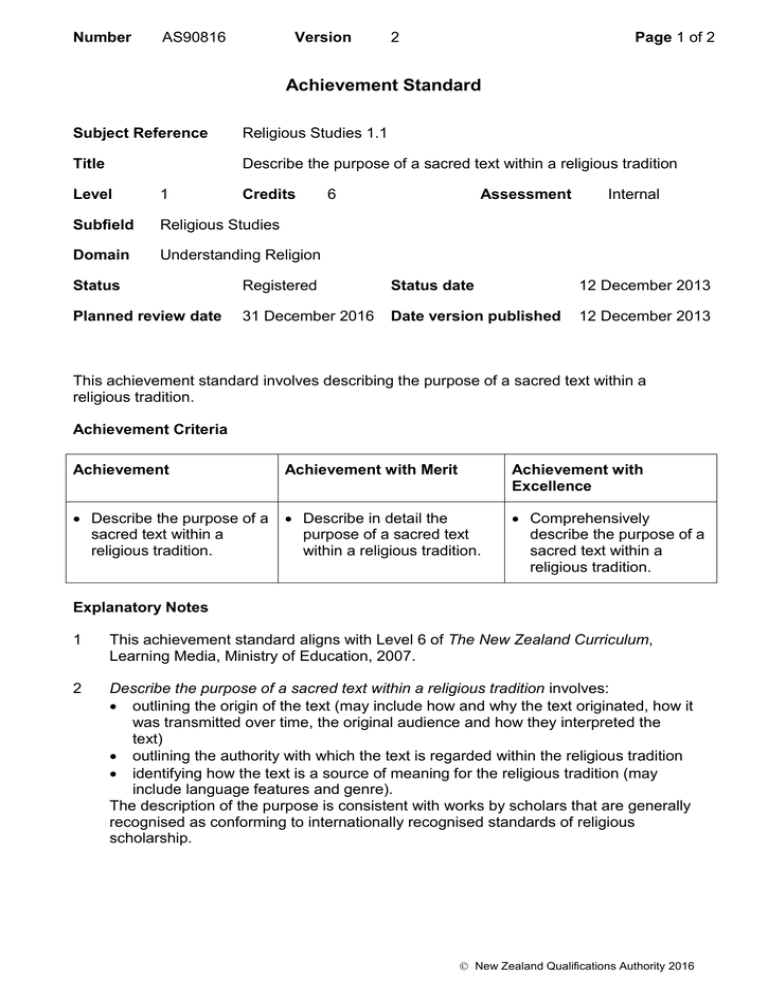
Number AS90816 Version 2 Page 1 of 2 Achievement Standard Subject Reference Religious Studies 1.1 Title Describe the purpose of a sacred text within a religious tradition Level 1 Credits Subfield Religious Studies Domain Understanding Religion 6 Assessment Internal Status Registered Status date 12 December 2013 Planned review date 31 December 2016 Date version published 12 December 2013 This achievement standard involves describing the purpose of a sacred text within a religious tradition. Achievement Criteria Achievement Achievement with Merit Achievement with Excellence Describe the purpose of a sacred text within a religious tradition. Describe in detail the purpose of a sacred text within a religious tradition. Comprehensively describe the purpose of a sacred text within a religious tradition. Explanatory Notes 1 This achievement standard aligns with Level 6 of The New Zealand Curriculum, Learning Media, Ministry of Education, 2007. 2 Describe the purpose of a sacred text within a religious tradition involves: outlining the origin of the text (may include how and why the text originated, how it was transmitted over time, the original audience and how they interpreted the text) outlining the authority with which the text is regarded within the religious tradition identifying how the text is a source of meaning for the religious tradition (may include language features and genre). The description of the purpose is consistent with works by scholars that are generally recognised as conforming to internationally recognised standards of religious scholarship. New Zealand Qualifications Authority 2016 Number AS90816 Version 2 Page 2 of 2 Describe in detail the purpose of a sacred text within a religious tradition involves: outlining the significance and influence of the sacred text within the religious tradition. Comprehensively describe the purpose of a sacred text within a religious tradition involves: making links between some of the following: how and why the text originated and was transmitted over time the original audience, and how they interpreted the text the authority with which the text is regarded within the religious tradition (including its influence on the tradition) how the text is a source of meaning for the religious tradition (including the current and past uses of the text) describing wider implications of the purpose of the sacred text. 3 Religious tradition means a world religion, or a division of a world religion, or an indigenous religion. 4 A world religion is a religious belief system that is generally recognised as having independent status from any other religion. Buddhism, Christianity, Hinduism, Islam, and Judaism are examples of world religions. 5 Wider implications may be social, historical, geographical, political, or personal. 6 A sacred text arises from historical events, visual representation, oral traditions and/or original experience. Examples of sacred texts include the Bible, the Qur’an, the Pali Canon, the Vedas, the Hebrew scriptures, the New Testament, and indigenous oral traditions, as recognised by the religious tradition. 7 Language features may include allegory, symbolism, metaphor, imagery. 8 Genre may include history, prophecy, poetry, myth, narrative, description, law. 9 Conditions of Assessment related to this achievement standard can be found at www.tki.org.nz/e/community/ncea/conditions-assessment.php. Quality Assurance 1 Providers and Industry Training Organisations must have been granted consent to assess by NZQA before they can register credits from assessment against achievement standards. 2 Organisations with consent to assess and Industry Training Organisations assessing against achievement standards must engage with the moderation system that applies to those achievement standards. Consent and Moderation Requirements (CMR) reference 0233 New Zealand Qualifications Authority 2016
